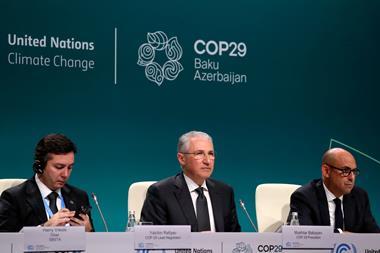It will come as no real surprise to see Barclays walk away again with IPE’s Country Award for the United Kingdom. Last year, it won for its innovative ‘afterwork’ concept, a hybrid defined benefit and defined contribution scheme. This year, its success is thanks to its excellent stakeholder engagement policy.
The Barclays Bank UK Retirement Fund has just fewer than 58,000 active members, almost 42,000 retirees and some 117,000 deferred members. At the end of 2004, it was worth €18.7bn with an actuarial funding position of 103%, or 84% under accounting standard IAS19.
The defined benefit element has 47% invested in equities, 37% in fixed income, 12% in property and 4% in private equity. The defined contribution fund has some £428m in assets.
Barclays says its commitment to developing a “world-class” pension is the main driver that led to it setting up new governance structures, which Barclays says ensure it succeeds in engaging the fund’s stakeholders to allow it to deliver what they need.
First step was restructuring the trustee board and employer committees, and establishing an elected staff committee.
The trustee board has been reshaped from its former six employer and three member-nominated trustees to a board which Barclays describes as showing greater balance and increased depth of talent.
It is now made up of three member-nominated trustees and three ‘alternates’, three employer-nominated representatives, again with three alternates, and three independents, one of whom is chairman.
To allow the trustees to focus on key strategic issues, Barclays has divided the trustee board into sub-committees – each having its own strategic plans and terms of reference – for investments, operations, communications and disputes.
The employer committees have been restructured to form the Barclays Pensions Governance Group (BPGG). Its members include senior management such as the group’s finance director, senior operations staff and human resources executives. Given the complexity of its pension scheme, Barclays decided it should have a separate sub-committee in which to concentrate its expertise: the Technical Advisory Group (TAG). This brings together experts from some of Barclays own operating divisions, including fund management from Barclays Global Investors and investment banking from Barclays Capital, as well as risk management, accounting, treasury and pensions specialists.
The elected staff committee forms the firm’s Pension Fund Advisory Committee, which consults on pensions with the employers and selects the member-nominated trustees. The last time the committee was up for election, some 18,000 votes were cast.
Barclays believes its new governance structure has led to greater understanding of risk management, funding and investments. Moreover, decisions are now more robust and taken more rapidly.
The TAG recently reviewed the pension scheme, assessing investment risks, demographics, regulation, catastrophes, covenants and the corresponding impact these have on the balance sheets, profit and loss accounts and cash and capital positions. This has given Barclays a clear picture of the risk it needs to take to support the pension fund, which has been backed by an injection of the bank’s capital. With the trustees’ consent, the Barclays board agreed the subsequent risk versus funding policy in April 2005.
The fund’s revised investment strategy is thus based on increased diversification, improved risk adjusted returns and better asset matching to remove unwanted risk. The risk-return assets include, among others, equities and alternatives such as commodities, hedge funds, private equity and property, whereas the matching assets comprise fixed income.
Barclays says its pension fund has subsequently benefited from a reduction of 10% (£200m) in its value at risk, while its information ratio has improved from 35% to 37%.
Next step was ensuring the employees were fully informed and educated about the pensions at their disposal. In this respect, the fund’s objective is to help members become financially secure for the future, knowledgeable and confident about their savings, appreciative of their pensions benefits and proactive in participating in the scheme. Even if this does not involve them contributing, Barclays is keen they are comfortable they have made the right choice.
Finally, the natural extension of this is improved communication. In July 2004, Barclays published its award-winning new-look benefits statement. That was the start of a communications revamp which, following detailed member research, now maximises access to key information for each individual and incorporates state benefits in pensions projections. It ensures each member can close any gaps they see in their pensions by making additional contributions. The information is customised to suit 26 different types of member.
The impact of these changes has seen an increase in the number of employees contributing directly to their pensions of 70% and average contribution rates themselves have risen from 3.5% to 5% of salary.
Highlights and achievements
What sets this fund apart is the dynamism its sponsoring company has shown in embracing the challenges of a rapidly changing pensions system in the UK.
Not content with merely closing its defined benefit scheme and replacing it clinically with a less generous defined contribution arrangement, Barclays has established an infrastructure and governance culture that will be the envy of its peers. In short, Barclays has succeeded in reshaping the retirement benefits it offers in a multi-faceted, comprehensive and flexible way.
Everybody and everything are included here and this transparent, well-structured hybrid system could be the benchmark by which other major firms adapt their UK offering.













No comments yet